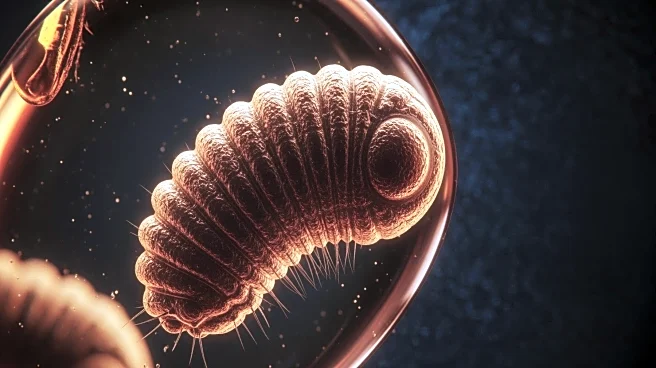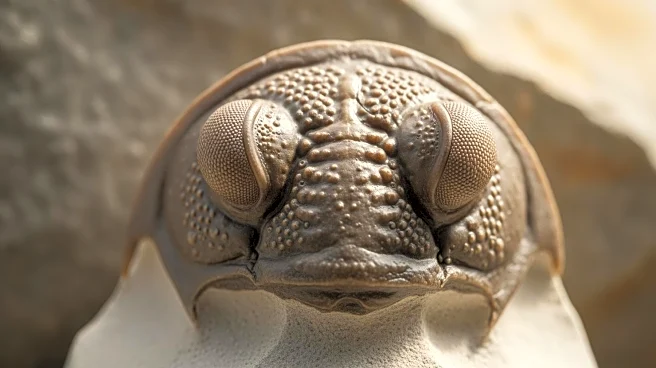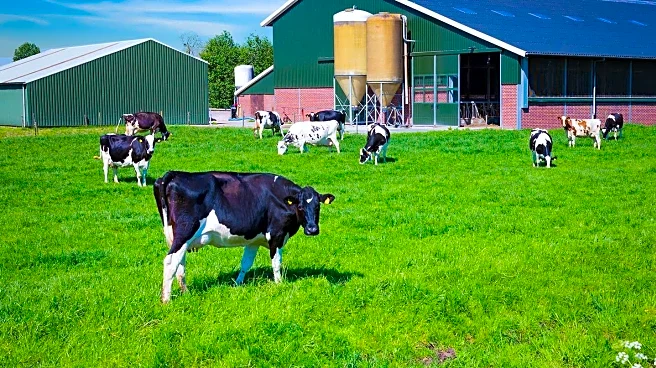What's Happening?
A recent study published in Science Advances has uncovered that early humans and their ancestors were exposed to lead nearly two million years ago, potentially influencing the evolution of brain and language development. Researchers from the University
of California San Diego and Southern Cross University analyzed 51 fossilized teeth from Homo sapiens, Neanderthals, and extinct apes, finding lead in 73% of the samples. This exposure, originating from natural sources like soil and volcanic dust, challenges the notion that lead exposure is a modern issue. The study suggests that a genetic mutation in the NOVA1 gene may have provided Homo sapiens with a resilience to lead's toxic effects, aiding in the development of communication skills crucial for survival.
Why It's Important?
The findings of this study have significant implications for understanding human evolution and the factors that contributed to the survival and dominance of Homo sapiens over other hominins. The genetic advantage linked to the NOVA1 gene mutation may have facilitated enhanced communication and social cohesion, critical for cultural transmission and adaptation to environmental stressors. This research highlights the complex interplay between genetics and environmental factors in shaping human development, offering insights into how early humans overcame challenges that led to the extinction of other species like Neanderthals.
What's Next?
Further research is necessary to substantiate the hypothesis that lead exposure played a pivotal role in human evolution. Scientists aim to explore the genetic and environmental interactions more deeply, potentially examining DNA from fossils to confirm the study's findings. This ongoing research could lead to a broader understanding of evolutionary biology and the genetic factors that have historically influenced human development.
Beyond the Headlines
The study opens up discussions on the ethical and scientific implications of genetic research in understanding human evolution. It raises questions about how environmental factors historically shaped genetic adaptations and the potential for similar interactions in modern contexts. The research also underscores the importance of considering natural environmental influences in evolutionary studies, which could reshape perspectives on human resilience and adaptability.













